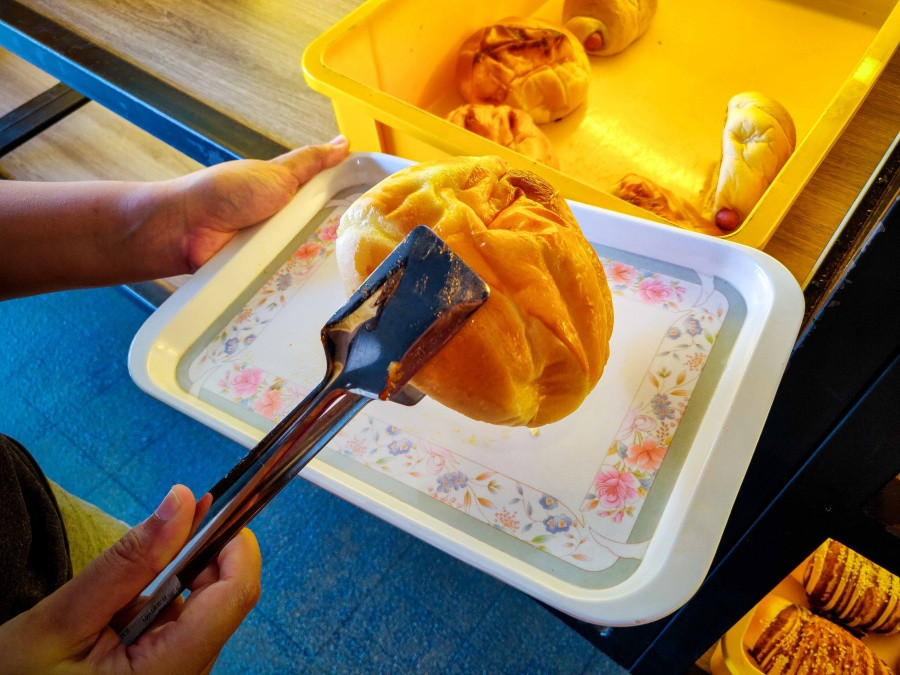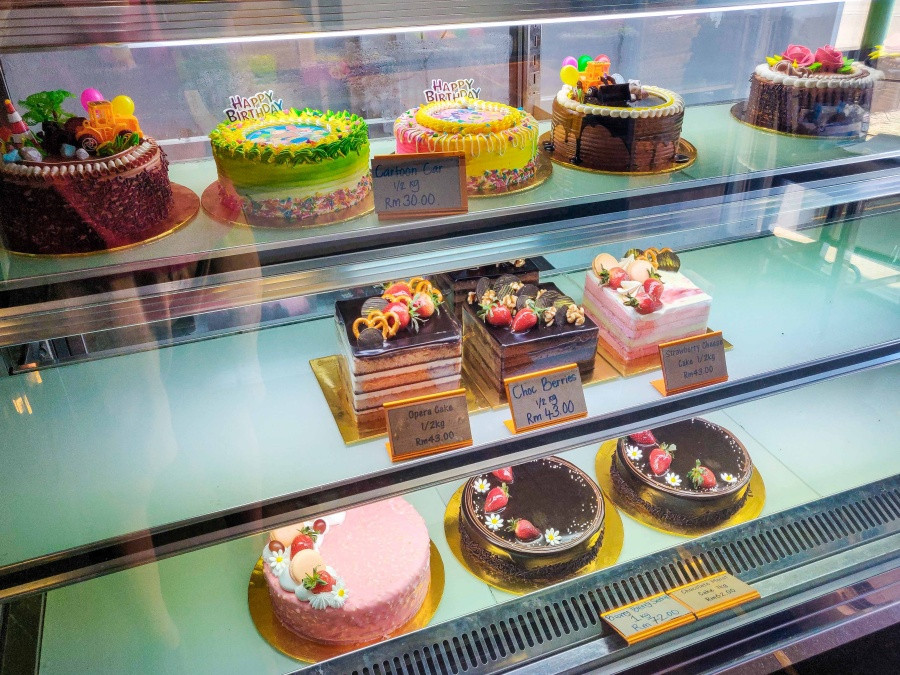How a Japanese technique influenced Malaysian bakeries
by Ceri Holloway12 Nov 2021
The tangzhong method made its way into local bakeries as a way to keep breads soft and fresh for a longer period.
“Go down and buy two sausage buns so you and your brother can have them in school tomorrow.”
This was a weekly instruction from my mother, double-parking the car outside the Berry’s bakery near where I used to have piano lessons. I would happily oblige and skip into the shop, picking up my favourite ‘Italian Chicken sausage bun’—a warm, cheese-crusted treat unique to Berry’s. Nevertheless, the classic sausage buns can be found on almost every street corner, whether in a bakery, convenience store, or even a roadside kuih stall.
The technique that rules them all
Most of you will know the kind of bread sausage buns are encased in—soft, fluffy, and resembling the French brioche. This is more commonly known as ‘milk bread’, thought to have originated in Hokkaido, Japan. It is quite the staple in the average Malaysian kid’s diet: featuring in bakery goods, used by the uncles who sell snacks on their motorcycles to sandwich ice-cream, and on the side of ‘Western food’ plates at local hawker centres.
The commonality of milk bread is the tangzhong roux. From Asian-American writers tracing their own family-founded ‘Chinese bakeries’, to Hong Kong home cooks who proudly lay claim to the Cantonese methods underpinning what is now recognised as Chinese baking, the tangzhong method is a common denominator.
An additional step to traditional Western bread-making process, tangzhong involves combining bread flour and water in a pot, heating it until it turns into a thick, cream-coloured paste. This is then mixed in with the other bread ingredients, yielding a dough that is easily shaped even with relatively high-water content (as described here by KP Kwan). With its airy bun and chicken frankfurter, the ‘Asian sausage bun’ is thus a localised appropriation of the Western sausage roll, usually puff pastry stuffed with pork sausage meat.
How tangzhong arrived in Malaysia
The tangzhong roux comes from a Japanese technique called ‘yukone’, which involves cooking the combined flour and water on a stovetop to form a gelatinised starch. Some speculate that this method was adopted by local bakers in places such as Hong Kong, Hainan, and Taiwan when they were under Japanese occupation during the Sino-Japanese Wars (1894-95, 1937-1945).
One Taiwanese baker in particular, Yu Fen Chen, popularised it across the rest of Asia in her book 65ºC Bread Doctor. Moving forward in time, Chinese immigrants in Malaysia who settled down to open tea houses and coffeeshops incorporated these style of buns into their menus, also bringing with them traditional Chinese fillings such as pork floss, barbecued pork (叉烧), and Chinese sausage (腊肠).
This progression can be seen in the founding stories of many iconic bakeries in Malaysia including household name Tong Kee Brothers. This business was started by Hoong Wah, whose family moved from Guangdong to KL in the 1930s, as a small business selling dim sum. Their menu was later expanded by one of the brothers who ventured to Hong Kong to learn a wider range of culinary skills.
Similarly, the owners of the iconic Bakeri Joy in Taman Megah (related to those of the former Angel Cake House in PJ) are of Hainanese heritage. Joy, one of the sisters and owners, recalls that their family business started around 40 years ago. “Initially, our recipes were just of things we liked to eat at home,” she says, also referring to milk bread buns. “Our aim is to stay faithful to these authentic recipes we inherited.”
The influence from previous generations is evident in the array of products still on offer in these bakeries, including items like pineapple buns and egg tarts alongside sausage buns. Moreover, these bakeries also knew that they had to appeal to local palettes for their successes, hence the presence of more Malaysian flavours, seen in products such as kaya buns and chicken floss (a halal alternative to the traditional pork floss).
Where do modern bakeries come in?
The bakery scene in Malaysia has expanded massively, with an increasingly diverse range of cuisines coming into play. This is especially true of more ‘Western’ oriented bakeries and patisseries that attract Malaysia’s younger generation familiar with ‘trending breads’ such as sourdough or rye. Bakeries like Tommy Le Baker and Levain are common knowledge among the KL crowd.
There is one major difference between these newer, more Western-style bakeries and the more traditional ones—the price. While RM15 can get you an assortment of sausage rolls, kaya buns, and bolo baos, this amount would not stretch very far in a modern bakery. This is not to say the latter are overpriced, as breads like sourdough made well do require high quality ingredients, skill, and passion.
However, the tangzhong process that goes into the humble milk bread bun is no piece of cake either. The price disparity raises the question of whether this traditional method of Asian baking should be valued more highly since there are fewer and fewer people who are able— and who want—to master it due to Malaysians’ changing tastes.
Plus, there’s no denying that you can’t quite munch onto a piece of sourdough the same way you can a sausage bun—but perhaps that’s the nostalgia speaking.
Try our recipe for homemade sausage buns.
***
Born and bred in Malaysia, Ceri Holloway is currently at university in the UK. She often cooks Malaysian classics for her non-Malaysian house of seven.
Read next
Sausage buns
A bakery classic at home

How did tinned sardines become a staple in Malaysian kitchens?
A history of canned fish in Malaysia

The value of tapioca through the eras
Tapioca, past and present






